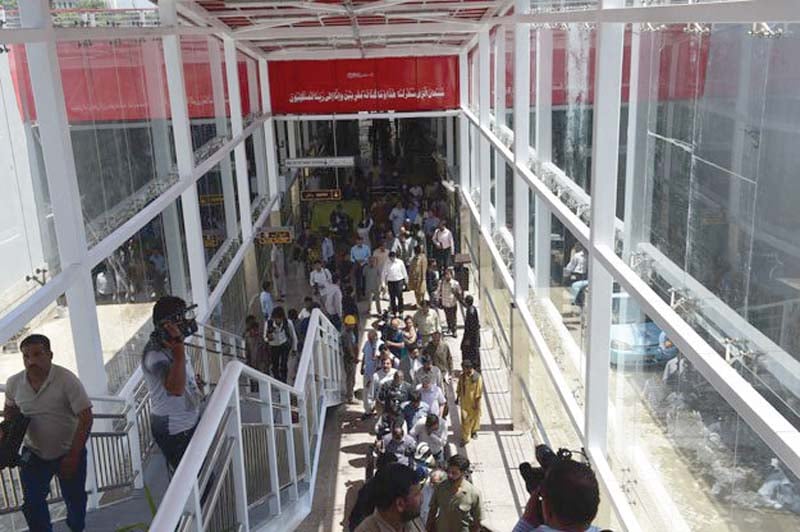
China is reluctant to sign a loan agreement for financing the $1.48-billion Orange Line Metro Train project after the Punjab government further increased the cost of the mass transit scheme by one-tenth under the ‘contingencies’ head.
“The Chinese are willing to provide loans only on the basis of the initial project cost estimates of $1.48 billion, which is $147 million less than the Punjab government’s revised working,” said officials in the Ministry for Finance and Economic Affairs.
“A Chinese delegation from Export-Import (EXIM) Bank is currently visiting Pakistan, but so far no progress has been achieved,” they added.
Prime Minister Nawaz Sharif had picked the ‘Orange Line project’ for showcasing the performance of the ruling party, just a day before the scheduled by-election in NA-122 Lahore. The 27.1-km long metro train will start from Ali Town and end at Dera Gujran, PM Sharif told media persons last Saturday.
The government is eager to complete the mass transit scheme before the next general elections, expected by mid-2018. However, the construction can only begin after the government-to-government loan is agreed upon. After the agreement, it will take another 27 months to complete the project.
However, currently, it seems that bureaucratic inefficiencies may delay the project completion.
Hurdles
In April this year, the provincial authorities had signed the Engineering Procurement Construction (EPC) contract on the basis of the initial PC-1 Cost of $1.479 billon with Chinese contractors, China Railway Corporation and North Industries Corporation.
Chinese suppliers would provide the electrical and mechanical system for the Metro Train project, which included the 27-train set. They would also provide the automated fare collection, signalling, power supply, railway track and communication systems.
Both sides had to sign a loan agreement after the EPC contract but the Punjab government got PC-1 approved from the Executive Committee of National Economic Council (Ecnec) at a price of $1.63 billion, said officials involved in negotiations with the visiting Chinese team.
The Ecnec approved the PC-1 in May this year and even the Planning Commission was not given sufficient time to critically evaluate project documents due to pressures from the provincial government, said officials of the Commission.
They said the China EXIM Bank was insisting to sign the deal on the original estimate as per initial PC-I and contract agreement. The Punjab government added $147 million as contingencies, which was a huge amount and one which the Chinese are reluctant to approve, they added.
Usually, the contingences are in the range of 2% to 3%, said officials of the Planning Commission.
The provincial authorities are of the view that the contingencies do not belong to the contractors, therefore Chinese should not object to it. They said the consultants recommended adding the contingencies in the PC-I of the project.
This appears to be a result of haphazard planning, as the contingencies could have been included at the time of the EPC contract, which was signed in April with the Chinese contractors.
The average borrowing cost of the Chinese-promised loan is 2.51%. The loan would be signed for a period of 20 years. The provincial government also wanted the interest rates to be much lower and equal to what Beijing offered to the federal government for transport infrastructure projects. The interest rate is expected to be close to 2%.
The federal government would provide sovereign guarantees for repayment of the loan.
When contacted, a top official of Punjab Mass Transit Authority (PMTA) did not comment on the issue, saying the negotiations were at a critical stage.
He hoped that the outstanding issues would be settled very soon. The PMTA is implementing the scheme.
Published in The Express Tribune, October 17th, 2015.
Like Business on Facebook, follow @TribuneBiz on Twitter to stay informed and join in the conversation.









1732486769-0/image-(8)1732486769-0-270x192.webp)







COMMENTS (3)
Comments are moderated and generally will be posted if they are on-topic and not abusive.
For more information, please see our Comments FAQ